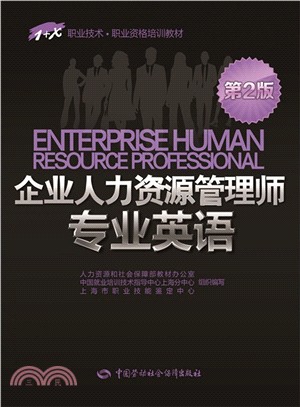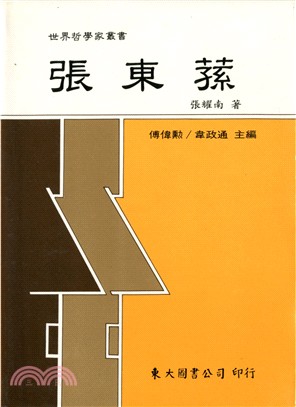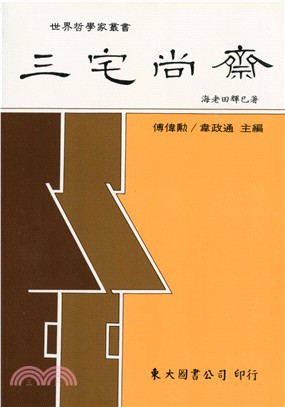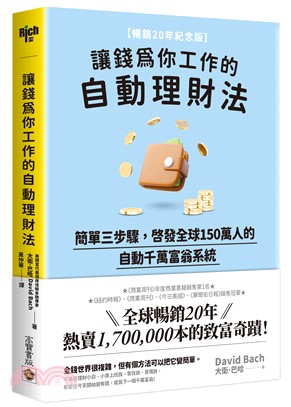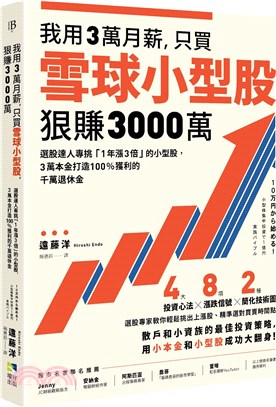相關商品
商品簡介
目次
書摘/試閱
商品簡介
《企業人力資源管理師專業英語(第2版)》由人力資源和社會保障部教材辦公室、中國就業培訓技術指導中心上海分中心、上海市職業技能鑒定中心依據上海企業人力資源管理師(三級)(二級)職業技能鑒定細目組織編寫。教材從強化培養操作技能,掌握實用技術的角度出發,較好地體現了當前最新的實用知識與操作技術,對于提高從業人員基本素質,掌握企業人力資源管理師專業英語的核心知識有直接的幫助和指導作用。
《企業人力資源管理師專業英語(第2版)》在編寫中摒棄了傳統教材注重系統性、理論性和完整性的編寫方法,而是根據本職業的工作特點,從掌握實用操作技能和能力培養為根本出發點,采用模塊化的編寫方式。《企業人力資源管理師專業英語(第2版)》內容分為企業人力資源管理師(三級)和企業人力資源管理師(二級)兩篇,內容分別包括人力資源規劃、招聘與配置、培訓與開發、績效管理、薪酬管理、勞動關系管理、人力資源管理國際化。全書后附有企業人力資源管理師(三級)和企業人力資源管理師(二級)詞匯表。
本教材可作為企業人力資源管理師(三級)(二級)專業英語職業技能培訓與鑒定考核教材,也可供全國中、高等職業院校相關專業師生參考使用,以及本職業從業人員培訓使用。
《企業人力資源管理師專業英語(第2版)》在編寫中摒棄了傳統教材注重系統性、理論性和完整性的編寫方法,而是根據本職業的工作特點,從掌握實用操作技能和能力培養為根本出發點,采用模塊化的編寫方式。《企業人力資源管理師專業英語(第2版)》內容分為企業人力資源管理師(三級)和企業人力資源管理師(二級)兩篇,內容分別包括人力資源規劃、招聘與配置、培訓與開發、績效管理、薪酬管理、勞動關系管理、人力資源管理國際化。全書后附有企業人力資源管理師(三級)和企業人力資源管理師(二級)詞匯表。
本教材可作為企業人力資源管理師(三級)(二級)專業英語職業技能培訓與鑒定考核教材,也可供全國中、高等職業院校相關專業師生參考使用,以及本職業從業人員培訓使用。
目次
第一篇 企業人力資源管理師(三級)
VolumeⅠ Enterprise Human Resources Professional (level 3)
第一章 人力資源規劃
Chapter one Human Resource Planning
1.1 什么是人力資源管理?What is Human Resource Management?
1.2 人力資源管理發展 History of Human Resource Management
1.3 人力資源管理的重要性 Importance of Human Resource Management
1.4 組織結構 Organizational Structure
1.5 工作分析 Job Analysis
1.6 工作設計 Job Design
1.7 人力資源規劃的目的Aims of Human Resource Planning
1.8 人力資源規劃的過程The Process of Human Resource Planning
第二章 招聘與配置
Chapter Two Recruit and Deploy
2.1 招聘計劃與實施 Recruitment Plan and Implementation
2.2 招聘來源和渠道 Recruitment Source and Channel
2.3 招聘面試 Interview
2.4 知識測驗Knowledge Test
2.5 心理測驗 Psychological Test
2.6 人員錄用程序 Employee Recruitment Procedure
2.7 人員配置原則 Employee Deployment Principles
第三章 培訓與開發
Chapter Three Training and Development
3.1 培訓需求分析目標 Aims of Training Needs Analysis
3.2 培訓需求分析范圍 Areas of Training Needs Analysis
3.3 需求分析的方法 Methods of Analyzing Needs
3.4 培訓組織實施 Training organization and implementation
3.5 培訓方法 Training Method
3.6 培訓和學習規范 Training and Learning Specifications
3.7 培訓評估 Training Evaluation
第四章 績效管理
……
第五章 薪酬管理
第六章 勞動關系管理
第七章 人力資源管理國際化
第二篇 企業人力資源管理師(二級)
第一章 人力資源規劃
第二章 招聘與配置
第三章 培訓與開發
第四章 績效管理
第五章 薪酬管理
第六章 勞動關系管理
第七章 人力資源管理國際化
附錄
參考文獻
VolumeⅠ Enterprise Human Resources Professional (level 3)
第一章 人力資源規劃
Chapter one Human Resource Planning
1.1 什么是人力資源管理?What is Human Resource Management?
1.2 人力資源管理發展 History of Human Resource Management
1.3 人力資源管理的重要性 Importance of Human Resource Management
1.4 組織結構 Organizational Structure
1.5 工作分析 Job Analysis
1.6 工作設計 Job Design
1.7 人力資源規劃的目的Aims of Human Resource Planning
1.8 人力資源規劃的過程The Process of Human Resource Planning
第二章 招聘與配置
Chapter Two Recruit and Deploy
2.1 招聘計劃與實施 Recruitment Plan and Implementation
2.2 招聘來源和渠道 Recruitment Source and Channel
2.3 招聘面試 Interview
2.4 知識測驗Knowledge Test
2.5 心理測驗 Psychological Test
2.6 人員錄用程序 Employee Recruitment Procedure
2.7 人員配置原則 Employee Deployment Principles
第三章 培訓與開發
Chapter Three Training and Development
3.1 培訓需求分析目標 Aims of Training Needs Analysis
3.2 培訓需求分析范圍 Areas of Training Needs Analysis
3.3 需求分析的方法 Methods of Analyzing Needs
3.4 培訓組織實施 Training organization and implementation
3.5 培訓方法 Training Method
3.6 培訓和學習規范 Training and Learning Specifications
3.7 培訓評估 Training Evaluation
第四章 績效管理
……
第五章 薪酬管理
第六章 勞動關系管理
第七章 人力資源管理國際化
第二篇 企業人力資源管理師(二級)
第一章 人力資源規劃
第二章 招聘與配置
第三章 培訓與開發
第四章 績效管理
第五章 薪酬管理
第六章 勞動關系管理
第七章 人力資源管理國際化
附錄
參考文獻
書摘/試閱
《企業人力資源管理師專業英語(第2版)》:
The origin of manpower planning, the predecessor of modern HR planning, predates the beginnings of twentieth - century management theory. Among the first to raise the manpower-planning issue was the Frenchman Henri Fayol (1841 - 1925). His famous fourteen points of management are still considered valid today. One point had to do with what Fayol called stability of tenure of personnel. For Fayol, administrators bear responsibility to plan for human resources,ensuring that "human and material organization is consistent with the objectives, resources, and requirements of the business concern" ( Fayol,1930, p. 53). This point resembles some modern definitions of HRP. A deep recession in the late 1950s sparkled the need for a new way of thinking about management. People were increasingly viewed as assets-human resources-that could be either developed or wasted. This way of thinking became even more pronounced during the 1960s and 1970s, when the focus was on finding ways to design organizations and jobs to permit individuals greater latitudes of self - expression. Human creativity and job satisfaction are still two of the most important concems of management. The 1960s also spawned the term ruanpower
planning. Initial manpower planning efforts were typically tied to annual budgeting, as is still the case in some organizations. The implication was that people are expense items, since wages, salaries, and employee benefits constitute a major cost of doing business. Early planners were more often found in planning and budgeting departments than in personnel or HR departments, but they did manage to devote some attention to forecasting manpower demands. However, it was a need to budget, not a desire to stimulate creativity or increase productivity, that spurred them.
As the Human Resources school of management thought grew important throughout the 1970s,manpower planning activities gradually shifted to personnel departments. At the same time, the term human resources planning supplanted manpower planning. Likewise, personnel departments were renamed human resource departments, reflecting a new and more pronounced emphasis on the human side of the enterprise. Human resource practitioners and other contemporary observers of the management scene have expressed a growing awareness ever since the 1990s that people represent a key asset in competitiveness. While Western nations have long placed enormous faith in the power of technology to enhance productivity, the fact is that the greatest competitive gains stem from the exercise of human creativity to identify new products and services, find new markets and applications for existing products and services, and make use of the possible gains to be realized from technology. Without the creative application of human knowledge and skill, organizations would not be formed and would not thrive for long. Human beings thus represent intellectual capital to be managed, just like other forms of capital ( Brown, 1998).
……
The origin of manpower planning, the predecessor of modern HR planning, predates the beginnings of twentieth - century management theory. Among the first to raise the manpower-planning issue was the Frenchman Henri Fayol (1841 - 1925). His famous fourteen points of management are still considered valid today. One point had to do with what Fayol called stability of tenure of personnel. For Fayol, administrators bear responsibility to plan for human resources,ensuring that "human and material organization is consistent with the objectives, resources, and requirements of the business concern" ( Fayol,1930, p. 53). This point resembles some modern definitions of HRP. A deep recession in the late 1950s sparkled the need for a new way of thinking about management. People were increasingly viewed as assets-human resources-that could be either developed or wasted. This way of thinking became even more pronounced during the 1960s and 1970s, when the focus was on finding ways to design organizations and jobs to permit individuals greater latitudes of self - expression. Human creativity and job satisfaction are still two of the most important concems of management. The 1960s also spawned the term ruanpower
planning. Initial manpower planning efforts were typically tied to annual budgeting, as is still the case in some organizations. The implication was that people are expense items, since wages, salaries, and employee benefits constitute a major cost of doing business. Early planners were more often found in planning and budgeting departments than in personnel or HR departments, but they did manage to devote some attention to forecasting manpower demands. However, it was a need to budget, not a desire to stimulate creativity or increase productivity, that spurred them.
As the Human Resources school of management thought grew important throughout the 1970s,manpower planning activities gradually shifted to personnel departments. At the same time, the term human resources planning supplanted manpower planning. Likewise, personnel departments were renamed human resource departments, reflecting a new and more pronounced emphasis on the human side of the enterprise. Human resource practitioners and other contemporary observers of the management scene have expressed a growing awareness ever since the 1990s that people represent a key asset in competitiveness. While Western nations have long placed enormous faith in the power of technology to enhance productivity, the fact is that the greatest competitive gains stem from the exercise of human creativity to identify new products and services, find new markets and applications for existing products and services, and make use of the possible gains to be realized from technology. Without the creative application of human knowledge and skill, organizations would not be formed and would not thrive for long. Human beings thus represent intellectual capital to be managed, just like other forms of capital ( Brown, 1998).
……
主題書展
更多
主題書展
更多書展本週66折
您曾經瀏覽過的商品
購物須知
大陸出版品因裝訂品質及貨運條件與台灣出版品落差甚大,除封面破損、內頁脫落等較嚴重的狀態,其餘商品將正常出貨。
特別提醒:部分書籍附贈之內容(如音頻mp3或影片dvd等)已無實體光碟提供,需以QR CODE 連結至當地網站註冊“並通過驗證程序”,方可下載使用。
無現貨庫存之簡體書,將向海外調貨:
海外有庫存之書籍,等候約45個工作天;
海外無庫存之書籍,平均作業時間約60個工作天,然不保證確定可調到貨,尚請見諒。
為了保護您的權益,「三民網路書店」提供會員七日商品鑑賞期(收到商品為起始日)。
若要辦理退貨,請在商品鑑賞期內寄回,且商品必須是全新狀態與完整包裝(商品、附件、發票、隨貨贈品等)否則恕不接受退貨。




